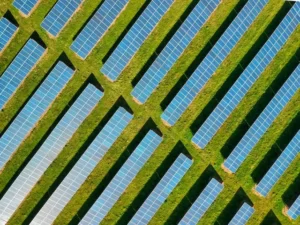To calculate how many solar panels you need for your house, start by reviewing your annual energy consumption, measured in kilowatt-hours (kWh). Next, consider your local sunlight conditions and the efficiency of solar panels, which typically ranges from 15% to 20%. Assess your roof space to guarantee ideal placement, factoring in orientation and shading. Once you gather this information, you can calculate the total number of panels required based on your energy needs and local sunlight availability. This method will help align your investment with your actual energy use while maximizing savings. By following these steps, you can make an informed decision.
Assess Your Energy Consumption
Before you plunge into calculating how many solar panels you need, it's essential to assess your energy consumption. Start by reviewing your utility bills from the past year to identify your average monthly energy use. This step is vital for determining how much energy you need to offset. Consider any energy-efficient appliances you have, as they can greatly lower your consumption. If you haven't upgraded yet, investing in energy efficiency can reduce your utility bills further. Once you have a clear picture of your energy needs, you can make informed decisions about solar panel placement and system size. This thorough assessment guarantees that your solar investment aligns with your actual energy usage, maximizing your savings and efficiency.
Understand Solar Panel Output
Understanding solar panel output is essential for maximizing your investment in renewable energy. The output of solar panels is largely influenced by solar panel efficiency, which measures how well they convert sunlight into electricity. Higher efficiency panels generate more power in a smaller area, making them a great choice if space is limited. Additionally, your inverter selection plays a critical role in overall system performance. Inverters convert the direct current (DC) produced by solar panels into alternating current (AC) for your home. Choosing a quality inverter can enhance energy production and reliability. By grasping these concepts, you can make informed decisions that align with your energy needs and budget. Are you ready to explore your options further?
Evaluate Roof Space Availability
Evaluating your roof space availability is essential for determining how many solar panels you can install. Start by examining your roof orientation, as south-facing roofs typically receive the most sunlight. Next, conduct a shading analysis to identify any obstacles like trees or buildings that may block sunlight.
Consider these factors:
- Width and length of your available roof space
- Roof pitch and angle for ideal solar panel placement
- Local zoning laws that may affect installation
- Potential obstructions that could create shade
Consider Local Sunlight Conditions
When planning for solar panels, it's essential to take into account the amount of sunlight your location receives throughout the year. Sunlight availability directly affects solar radiation, which is vital for maximizing energy production. Understanding seasonal variations can help you determine the efficiency of your solar system.
Here's a simple breakdown of sunlight conditions:
| Season | Average Sunlight Hours | Solar Radiation Level |
|---|---|---|
| Spring | 8 | Moderate |
| Summer | 10 | High |
| Winter | 6 | Low |
Calculate the Number of Panels
After considering the local sunlight conditions, it's time to calculate how many solar panels you'll need for your home. Start by determining your energy consumption in kilowatt-hours (kWh) and factor in the panel efficiency of the solar panels you're considering. Generally, panels range from 15% to 20% efficiency. Next, look at installation costs, which can vary widely, so it's essential to get multiple quotes.
To help you through the calculation, consider these points:
- Your average monthly energy usage
- The average sunlight hours in your area
- The efficiency rating of the solar panels
- Your budget for installation costs
Frequently Asked Questions
How Do Solar Panel Incentives Affect the Number Needed?
Incentive programs can greatly impact your solar panel needs. By reducing upfront costs, they allow you to invest in fewer panels while maximizing energy savings, making your solar project more financially viable and efficient.
Can I Install Solar Panels Myself or Hire a Professional?
You can choose DIY installation if you're handy, but hiring professional services is often safer and more efficient. Professionals guarantee everything's done correctly, maximizing your system's performance and longevity without the hassle of potential mistakes.
What Are the Maintenance Requirements for Solar Panels?
Maintaining solar panels involves regular cleaning techniques to remove dirt and debris. You should also perform performance monitoring to guarantee they're operating efficiently. This way, you'll maximize their output and longevity for your home energy needs.
How Long Do Solar Panels Typically Last?
Solar panels typically last 25 to 30 years, with many manufacturers offering a solar panel warranty of 20-25 years. You'll find their efficiency may decrease slightly over time, but they remain functional for decades.
What Financing Options Are Available for Solar Panel Installation?
When considering solar panel installation, you've got several financing options. Solar loans can help you own your system outright, while leasing options allow you to enjoy savings without upfront costs. Explore what suits you best!
Conclusion
By following these steps, you can accurately determine how many solar panels your home needs. Assess your energy use, understand panel output, and evaluate your roof space and local sunlight conditions. This knowledge helps you make informed decisions about your solar installation. If you have questions or need assistance, consulting with a solar energy expert can provide tailored guidance. Investing in solar energy not only benefits your home but also contributes to a more sustainable future.



